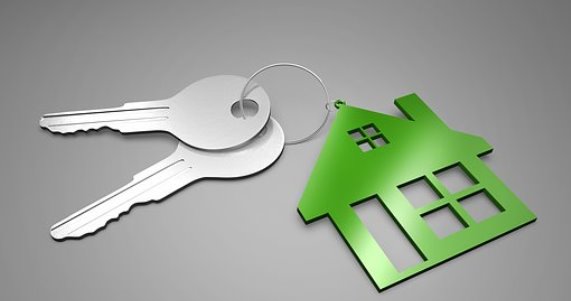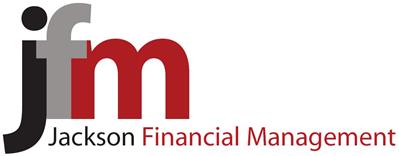If you’re relocating to a new city, it’s a good idea to do your homework about living costs…particularly if it’s Sydney.
When you’re moving interstate it’s natural to focus on the costs and logistics of the actual move—removalists, storage, rental bonds.
But what about the costs of living in a new city?
It’s important to crunch the numbers beforehand to avoid any nasty surprises, particularly if you’re heading to Sydney.
One of our former prime ministers famously said that if you don’t live in Sydney you’re just camping out.
And whether you believe Paul Keating or not, it’s fair to say that the harbour city’s popularity comes at a price.

A tale of two cities
Natalija and Melissa recently moved in opposite directions along the Hume. Here are their first impressions of their new homes.
Natalija moved from Sydney to Melbourne
-
What’s cheaper than you expected? I was surprised by how much more affordable Melbourne was than Sydney. I wasn’t expecting to pay less rent in an area that was relatively the same distance to the CBD. In Sydney I paid $200 more per week to live in an inner city suburb (Darlinghurst). And it took me longer to get to work as I walked because I couldn’t spend any money on transport! Where I live in Melbourne (Prahran), I pay less rent and I live in a great spot, close to restaurants, bars and parks. I can walk everywhere and still afford to catch public transport to work. And I can still save money for my mortgage and holidays! I just love the Melbourne vibe.
-
And what’s more expensive? Perhaps car insurance and registration are slightly higher than Sydney but everything in Melbourne is nominally more affordable.
-
What tips you would give anyone moving to a new city? Do your research, particularly on sought-after areas in proximity to work and schools. This will ultimately affect how much you spend on buying/renting a house, contents, insurances and bills. Also consider your lifestyle choices (restaurants, bars, gym etc). It’s all dependent on your own situation.
…and Melissa moved from Melbourne to Sydney…
-
Is anything cheaper than you expected? $2.50 all day travel on Sunday with the Opal card.
-
And what’s more expensive? Rent! You a pay a lot a more in Sydney and you typically get a lot less. I am paying an extra $130 per week in rent compared to Melbourne, and for a space that is smaller than what I had. Melbourne is better value when it comes to rent, but that’s Sydney for you.
6 living costs that vary around Australia
Here are some things that could be more expensive (or cheaper) in your new city, whether you’re thinking of joining Melissa and five million other Sydneysiders or Natalija and the 20 million other Australians just camping out.
1. Buying groceries and clothes
As a general rule if you’re leaving Sydney you’ll save money—for example, consumer prices are 13.24% lower in Brisbane than in Sydney1.
But economies of scale mean that if you’re moving to a more remote or smaller city you could find yourself paying more for the basics. So anyone moving from Sydney to Darwin or Hobart would be pleasantly surprised by housing and transport costs but not as excited by the fact they could be paying a little more for the weekly grocery shop2.
And if you’re moving to a bigger city it could all depend on where you’re based. If you’re in an inner-suburban apartment you might have limited choice with grocery shopping. If you’re in an outer suburb you may have bigger—and cheaper—supermarkets nearby.
Clothes are another matter. If you’ve been living in subtropical Queensland and you’re moving south, you might need to adjust to a very different weather, as well as a whole new wardrobe.
In Melbourne you’ll need an outfit for every season—often in the same day. In Townsville on the other hand you could save money…just stock up on thongs and singlets and you should be right.
2. Eating out and socialising
Eating out in your new city could set you back more than you bargain for.
The average cost of a daily cappuccino is $4.01 in Sydney, $4.48 in Perth and a whopping $4.78 in Darwin3.
For anyone moving north from Sydney or Melbourne, a three-course meal for two at a mid-range restaurant is cheaper in the Gold Coast ($70) and even cheaper in Darwin ($65).
But a McMeal is a bit more in the Top End—$12 at Maccas compared with $10 in most of the rest of Australia4.
3. Commuting to work
Your monthly pass on public transport is another cost of living that varies widely across Australia—$99 in Adelaide, $130.43 in Perth, $140 in Brisbane, $147 in Melbourne and…wait for it…$217.39 in Sydney. So perhaps follow Melissa’s advice and stick with Sunday travel if you’re in Sydney!
And of course, public transport can vary widely depending on where you live in a particular city, both in terms of cost and comfort. A short ferry ride from the north shore to Circular Quay in Sydney is a very different commuting experience to the train from Parramatta. Equally, if you’re moving to a regional or more remote capital city you may find you need to rely on the car more as public transport can be patchy at best and non-existent at worst.
4. Renting an apartment
In terms of our state capitals, no prizes for guessing that Sydney is the more expensive state capital with a median weekly rent of $583. The most affordable? Adelaide just beats Perth, with the average apartment in the city of churches costing you $375 a week5.
5. Buying a house
It won’t surprise anyone to know that Sydney tops the charts when it comes to buying a house, with a median house price of $1,027,962 for the March 2019 quarter. For anyone prepared to camp out, head to Tassie where a house in Hobart will set you back $478,2476.
6. Sending the kids to school
For anyone with school-age kids, education options are going to be at the top of your list when you decide to move. So it’s important to do your research on how things work in your new city. New Melbournians might be surprised to find that the Victorian capital has a very distinct split between public and private schools, with very few selective schools compared to Sydney.
If you’re set on educating the kids privately through high school then costs can vary widely, from $373,421 in Darwin to $543,334 (yes, Sydney again). Parents of kids at Catholic schools get the best deal in Canberra and the most expensive in Brisbane. And even government school costs vary considerably, from nearly $70,000 in Sydney and Melbourne to less than $50,000 in Adelaide and Hobart7.
New city, new you?
Moving cities isn’t just about money. It’s about setting up a whole new life in a whole new place. Ask yourself some questions about how you’ll go in a new environment.
-
Think connections. If there’s someone you went to school with or used to work with in the area, why not look them up and reconnect? They could be an invaluable source of local knowledge and introduce you to their local network of friends.
-
Think demographics. If you’re retired and moving to a city dominated by twentysomethings, or if you’re a young parent and moving to a suburb full of retirees, you might find it difficult to meet like-minded people.
-
Think jobs. If you work in the creative industries and you’re moving to an area dominated by finance, you might find it hard to secure a job in your preferred field and might need to think a bit laterally about job opportunities.
-
Think sport. If the kids barrack for their local league side in Sydney and you’re planning to move across the Nullarbor, you might need to broaden their sporting horizons to include AFL or soccer.
-
Think atmosphere. If you’re used to the excitement and buzz of living in a big city on the east coast and you’re planning to move to somewhere quieter like Hobart, you might need to adjust to a different pace of life.
If you’re planning a move, check out this great cost of living comparison tool.
Important:
This information is provided by AMP Life Limited. It is general information only and hasn’t taken your circumstances into account. It’s important to consider your particular circumstances and the relevant Product Disclosure Statement or Terms and Conditions, available by calling Phone 02 9906 6566, before deciding what’s right for you.
All information in this article is subject to change without notice. Although the information is from sources considered reliable, AMP and our company do not guarantee that it is accurate or complete. You should not rely upon it and should seek professional advice before making any financial decision. Except where liability under any statute cannot be excluded, AMP and our company do not accept any liability for any resulting loss or damage of the reader or any other person.


